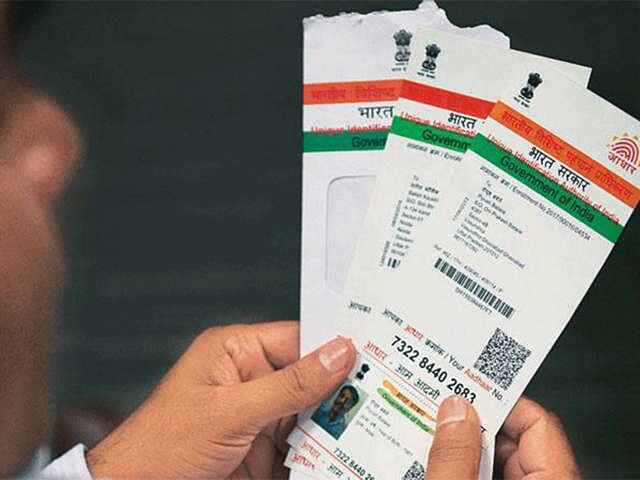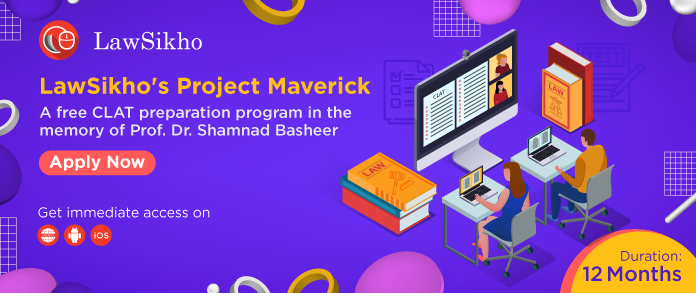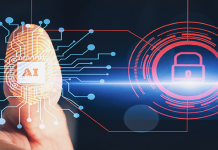This article is written by Anaya Jain, a student of BA.LLB(Hons) from NMIMS school of law, Bangalore. This is an exhaustive article which discusses Aadhaar, its act of 2016 and analyzes the case of the Supreme court on it.
Table of Contents
Introduction
“Mera Aadhaar, Meri Pehchan” – Hope this quote gave you an inkling about what this article is bringing to your plate. The world’s biggest biometric ID system is what we call Aadhaar in India. World Bank Chief Economist Paul Romer portrayed Aadhaar as “the most sophisticated ID program on the planet.” It is viewed as a proof of residence and not a proof of citizenship, Aadhaar doesn’t itself award any rights to domicile in India. The concept of aadhaar was born in India on 28th January 2009 and since then is issued and valid only in India.
What is Aadhaar about, and how is it used?
- Aadhaar is about the identity of an individual. It is a 12-digit unique identity for each Indian individual, including youngsters and newborn children.
- Empowers recognizable proof for each occupant Indian.
- Sets up the uniqueness of each person based on demographic and biometric data.
- Every individual will be given a solitary one of a kind Aadhaar ID number.
- It will give a universal identity infrastructure which can be utilized by any identity-based application such as ration card, visa, and so on.
- UIDAI (Unique Identification Authority of India) will give Yes/No responses for any identity verification doubts.
Information collected under Aadhaar
- Information gathered by the UIDAI is purely to issue Aadhaar numbers and affirm the identity of Aadhaar number holders.
- The UIDAI is gathering fundamental information fields so as to have the option to build up identity – this incorporates Name, Date of Birth, Gender, Address, Parent/Guardian’s name basic for kids, however for nobody else. Mobile number and email id are discretionary too. It does not collect sensitive information like income, caste and class details, health, bank account, property details, education and so on.
- The UIDAI is gathering biometric data to build up uniqueness – accordingly gathering photographs, 10 fingerprints and iris.
- The UIDAI is banned from uncovering individual data in the Aadhaar database – the only reactions allowed are a ‘yes’ or ‘no’ to solicitations to check identity. The only exemptions are the request for a court, or the request for a joint secretary if there should be an occurrence of national security. This is a sensible exemption and is clear and exact. This methodology is additionally in accordance with security standards followed in the US and Europe on access to information if there should be an occurrence of a security danger.
Birth of the Aadhaar Act
The Aadhaar (Targeted Delivery of Financial and other Subsidies, advantages and administrations) Act, 2016 is a cash bill of the Parliament of India. It expects to give lawful support to the Aadhaar exceptional ID number project. It was passed on 11 March 2016 by the Lok Sabha. Certain arrangements of the Act came into power from 12 July 2016 and 12 September 2016.
The vast majority of the arrangements of the Bill have been acquired from the past National Identification Authority of India Bill, 2010. The significant distinction is that the three-member board of trustees called the Identity Review Committee of the past bill was expelled in the new bill. Also, Section 8 of the Aadhaar Act is altogether not the same as that of the NIAI bill, 2010. While the NIAI bill permitted the confirmation constrained to the biometric match just with Yes/No choice, the Aadhaar Act permits the requesting agency/individual to request other data as well, relating to the individual’s identity.
Whether the Aadhaar Act violates the right to privacy?
The validity of the Aadhaar structure was challenged by Justice KS Puttaswamy and Pravesh Khanna on the ground of right to privacy in 2012. The case of Justice Puttaswamy and Anr. v Union of India and Ors began in 2018 by the constitutional bench of the Supreme court which held the verdict in negative to this question by a majority of 4:1. However, certain orders making citing of aadhaar number mandatory have been struck down. Few provisions such as the revelation of individual data, discernment of offences and utilization of the Aadhaar ecosystem by private corporations were removed from the act. Section 57 of the Aadhaar Act has been struck down by the Bench, which requires private organizations to use Aadhaar for authentication.
Highlights of the SC judgement
-
Aadhaar and Privacy
The Supreme Court judgement has made 3 tests for establishing the right to privacy of an individual. The tests are –
- The Supreme Court held that the expression ‘any purpose’ isn’t proportionate, excessively wide and prone to misuse. The Supreme Court set out that the reason must be ‘backed by law’.
- Furthermore, the chance of gathering and utilizing Aadhaar numbers for validation as per an agreement was refused since this may compel people to give their assent as an agreement for an unjustified reason. The Supreme Court set out that the agreement must be ‘upheld by law’.
- Thirdly, private entities are not allowed to utilize Aadhaar numbers with the end goal of validation, based on an agreement with the concerned individual, since it would empower commercial misuse of a person’s biometric and demographic information by private entities. This viably keeps organizations from utilizing Aadhaar based e-KYC verification of a person’s personality, which was principally the manner by which numerous organizations compiled with the relevant know your customer (KYC) prerequisites.
The Supreme Court struck or read down specific bits of the Aadhaar Act, which didn’t satisfy the above proportionality test. Nonetheless, besides these provisions, the Supreme Court held that the Aadhaar Act, in general, as a law, serves a legitimate state aim and is proportionate, in this manner being a sensible exemption to the right to privacy. Section 7 of the Aadhaar Act, making the Aadhaar number obligatory for getting subsidies, benefits and services from the Government (for which use was drawn from Consolidated Fund of India) was along these lines held to be substantial.
-
Aadhaar and Money Bill
The majority held aadhaar bill as a money bill on few grounds but it was challenged –
- The Aadhaar Bill was a Money Bill as it had a considerable nexus with the appropriation of funds from the Consolidated Fund of India and was legitimately associated with Article 110 of the Constitution (Paragraph 411 of Justice Sikri’s decision). Therefore, the majority view has presented another idea of “significant nexus with the appropriation of funds and direct connection”.
- In an agreeing view, it was held that Section 7 would be covered by clauses (c) and (e) of Article 110 (1). It is additionally presented that paragraph 411 of the decision of Justice Sikri wrongly expresses that use for the Aadhaar scheme is “chargeable” to the Consolidated Fund of India.
It was challenged on the following grounds –
- The majority presents a test of “substantial nexus with the allocation of funds and direct connection”. This will empower any future Parliament to present any Bill with only one provision that has a substantial nexus with the “appropriation of funds and direct connection” and it would be called a “money Bill”.
- The majority has wrongly assumed that expenditure under section 7 is “charged” to the Consolidated Fund of India. Article 112(3) of the Constitution explicitly lists expenditure that will be charged to the Consolidated Fund of India. Expenditure on the Aadhaar scheme is “incurred” from the Consolidated Fund of India and won’t be secured by Articles 110(c) or 110(e). Therefore, Article 110(g) will likewise have no application.
- It totally demolishes the significance of “only”, which is a purposeful limitation on the powers of the Lok Sabha. A Bill need not be sent to the Rajya Sabha on the off chance that it is a “money Bill”. Every single other Bill needs to go to the Rajya Sabha for approval. In this way, any Bill, which has different meaningful provisions, along with Clause (a) to (g), can’t pass as a Money Bill.
- The greater part doesn’t consider the legislative history of Article 110 and how it was explicitly founded on the provisions of section 1(2) of the Parliament Act, 1911 passed by the United Kingdom.
- Indeed, the Aadhaar didn’t have the remotest claim to be a Money Bill as not a solitary clause of Article 110 applied to any of its provisions, including section 7.
-
Aadhaar and services
- Aadhaar system gives single source offline/online identity verification all over the nation for the inhabitants. When occupants enlist, they can utilize the Aadhaar number to verify and build up their personality on various occasions utilizing electronic methods or through offline verification, by and large. It wipes out the problem of supporting identity documents, again and again, each time an inhabitant wishes to get the services, benefits and subsidies. By giving a compact evidence of identity that can be checked through Aadhaar authentication online whenever, and at anyplace, the Aadhaar framework empowers portability to a great many individuals who migrate starting with one piece of the nation then onto the next.
- Aadhaar card anyway should be for availing facilities of government assistance plans and government subsidies as it engages poor and marginalised sections of people. The apex court has struck down Section 57 of the Aadhaar Act as “illegal”. This implies no organization or private entity can look for Aadhaar recognizable proof from you. The constitution bench of the top court has likewise struck down the national security exemption under the Aadhaar Act. This will by implication guarantee more privacy of a person’s Aadhaar information while limiting the accessibility of government to it.
- Aadhaar offers respect to the marginalised. Dignity to the minimized exceeds privacy.
- ‘Benefits’ and ‘services’ as mentioned in Section 7 ought to be those which have the shade of some kind of subsidies and so on. Specifically, government assistance plans where the Government is giving out such advantages which are focused on a specific deprived class. It would cover just those ‘benefits’ and similar to that. The consumption thereof must be drawn from the Consolidated Fund of India.
- Right to get these advantages, from the perspective of the individuals who deserve the same, has now accomplished the status of fundamental right dependent on a similar idea of human dignity, which the petitioner looks to bank upon.
-
Aadhaar for children
- The majority order has allowed the enlistment of children under the Aadhaar Act with the assent of their parents/guardian. On turning 18, if a child needs to quit the Aadhaar, she will be given the choice to exit. As of now that arrangement is missing in the act. Confirming that school admission of children is neither a service nor a subsidy, the order directed that the necessity of Aadhaar would not be obligatory for confirmation.
- Since under the Constitution education is a fundamental right for children of the ages 6 to 14 years, enlistment under a plan, for example, Sarv Shiksha Abhiyan doesn’t require Aadhaar as it’s anything but an advantage or benefit.
- However, for availing advantages of other government welfare plans, Aadhaar can be made compulsory for youngsters, subject to the assent of the parent. However, the request takes into consideration the restricted use of Aadhaar, it incorporates a staggering special case.
- The order additionally explains that no child will be precluded from claiming advantage from any of these schemes if for certain reasons, she can’t deliver the Aadhaar number and the advantage will be given by checking the identity based on some other documents.
-
Linking of Aadhaar to PAN
The decision held it mandatory for an individual to link its Aadhaar card to PAN that is Permanent Account Number which is a 10 digit alphanumeric identity that is issued by the Income-tax department. It also made it necessary at the time of filing income tax return.
-
Linking of Aadhaar to Banks and mobile phones
- The order made it clear that anyone who is not sharing Aadhaar number will not be denied to avail any services be it a bank account or SIM card.
- The enactment proposes telecom service providers, aside from utilizing Aadhaar for authentication, can likewise use offline verification, utilization of visa, or some other formally legitimate record or methods of distinguishing proof as notified by the central Government.
- Most commercial banks, payment banks and e-wallet companies like Paytm had so far been demanding clients to complete their KYC utilizing Aadhaar card and had cautioned account holders that their administrations will be hindered in the event of disappointment. Presently, they can’t look for Aadhaar information. An individual is required to satisfy other KYC standards but Aadhaar authentication for financial balances is currently a thing of the past.
Conclusion
Aadhaar is presently obligatory for a huge extent of India’s population. That implies for any individual claiming the government assistance qualifications, and for any individual who is qualified to make good on the personal expense, they should give up their biometrics to a plan that is, right now, gently managed by law.
To place this into a bigger setting, the Supreme Court majority appears to imagine that Aadhaar is an advanced adaptation of the US Social Security Number or the UK’s National Insurance Number, where it is suitable to be made obligatory for a person’s monetary cooperations with the state (for example tax, government assistance) however not other things. Above all, regardless of whether this was valid, Aadhaar ought to have more defences on it similar to safeguards somewhere else on the planet. Aadhaar is certainly not a solitary numbering framework alone, it is a mammoth incorporated centralised biometric database. Inquiries of legality, proportionality, and necessity need to think about these real factors in incredible detail, including cross-examining cases of specialized productivity and technical abilities.
“The undetectable strings of a general public arranged on biometric information have grave signs for what’s to come. Except if the law commands a successful and effective data security system, the journey for freedom and dignity would be as transient as the breeze.”
LawSikho has created a telegram group for exchanging legal knowledge, referrals and various opportunities. You can click on this link and join:
https://t.me/joinchat/J_0YrBa4IBSHdpuTfQO_sA
Follow us on Instagram and subscribe to our YouTube channel for more amazing legal content.
 Serato DJ Crack 2025Serato DJ PRO Crack
Serato DJ Crack 2025Serato DJ PRO Crack











 Allow notifications
Allow notifications



